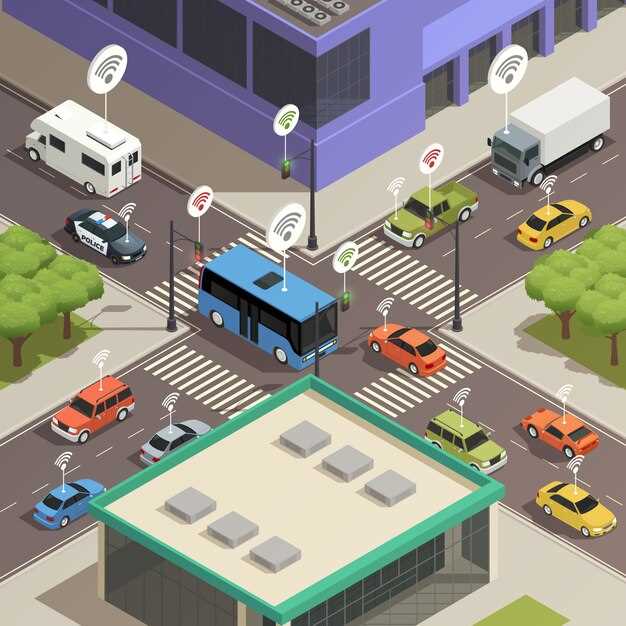Consider investing in solar-powered vehicles to reduce your carbon footprint while enjoying the benefits of sustainable mobility. These innovative cars harness solar energy, offering a cleaner alternative to traditional fossil fuel-powered transportation. With advancements in solar technology, manufacturers increasingly integrate photovoltaic cells into vehicle designs, maximizing energy efficiency.
Studies indicate that solar-powered cars can significantly lower operating costs. By utilizing sunlight, owners can decrease their reliance on charging stations and fossil fuels. For example, a single solar panel can generate enough electricity to power a vehicle for considerable distances, making it an economically savvy choice over time.
Transitioning to solar vehicles aligns perfectly with global sustainability goals. Governments and industries are focusing on renewable energy sources, and solar cars stand at the forefront of this movement. As infrastructure develops for solar charging stations, accessibility will improve, further promoting the adoption of this clean technology.
Solar-powered cars offer more than environmental benefits. They also provide a unique driving experience, often designed with cutting-edge technology and sleek aesthetics. As consumers, embracing these advancements enhances personal and communal well-being. Engage with this growing market to drive practical innovation in transportation.
How Solar Panels Are Integrated into Vehicle Design
Integrating solar panels into vehicle design involves strategic placement and advanced materials. Manufacturers often position solar cells on the vehicle’s roof, hood, and sometimes even on the rear surface. This maximizes sunlight exposure while maintaining aerodynamic efficiency.
Thin-film solar cells play a significant role in vehicle design due to their lightweight and flexible properties. These cells can be incorporated directly into the car’s surface, creating a seamless look without adding bulk. This innovation allows for a more streamlined design, enhancing both style and function.
Some designers utilize glass as a substrate for solar cells, which not only protects the panels but also maintains visibility and aesthetics. This method is effective in converting the vehicle’s surface into a solar-absorbing unit while preserving the sleek lines of the car.
Integration also commonly involves a hybrid approach, combining solar energy with other power sources. Vehicles may use solar panels to recharge auxiliary batteries that power non-essential systems, thereby improving efficiency and extending the vehicle’s range.
Innovative designs feature solar panels that tilt or adjust based on the position of the sun, optimizing exposure throughout the day. This technology increases energy capture, making solar power a more viable option for daily driving needs.
To enhance durability, manufacturers continue to explore advanced coatings that protect solar panels from damage while increasing their energy conversion efficiency. Such advancements ensure longevity without compromising performance.
By embracing these techniques, the automotive industry paves the way for a sustainable future that harnesses renewable energy. Integrating solar technology into vehicle design not only reduces reliance on fossil fuels but also enhances overall vehicle functionality and market appeal.
Cost Analysis: Initial Investment vs. Long-Term Savings
Investing in solar-powered cars offers substantial long-term savings that often outweigh the initial costs. When considering this alternative, analyze these key factors:
- Initial Costs:
- The average price of a solar-powered vehicle is higher than traditional cars, ranging from $25,000 to $50,000.
- Installation costs for solar panels at home or charging stations should be factored in, typically between $10,000 and $30,000, depending on the system size.
- Government incentives can reduce the financial burden, often covering 30% of installation expenses.
- Fuel Savings:
- Solar power significantly decreases fuel costs. Driving a solar-powered car can reduce fuel expenses to nearly zero.
- Estimates show savings of around $1,000 to $1,500 annually on fuel compared to gasoline-powered vehicles.
- Maintenance Costs:
- Solar cars have fewer moving parts, translating to reduced maintenance expenses. Average maintenance costs can drop by up to 50%.
- Battery longevity improves with solar technology, potentially lasting 10-15 years before replacement.
- Insurance Costs:
- Insurance for solar cars may have higher premiums initially, but their lower accident rates can lead to discounts over time.
- Shop around for insurance policies specific to electric vehicles for better rates.
- Resale Value:
- The resale market for solar vehicles is expanding, with values expected to stabilize as demand for renewable energy increases.
- Consider depreciation trends: electric vehicles generally retain value better than traditional cars.
By evaluating both short-term investments and long-term savings, solar-powered cars emerge as a wise financial choice. Assess your driving habits and regional solar efficiency to further tailor your decision. The combination of lower operating costs and environmental benefits makes solar vehicles a smart investment in the future of transportation.
Impact of Solar Cars on Urban Infrastructure Development
Integrating solar cars into urban landscapes requires cities to reevaluate their infrastructure. Prioritizing solar charging stations can significantly reduce reliance on traditional power grids and promote cleaner energy sources. Cities should consider dedicating parking spaces that not only serve vehicles but also provide solar arrays to harness energy directly.
Urban planning needs to shift toward mixed-use developments that support the transit of solar vehicles. Designers can create multi-functional spaces that incorporate green technology, allowing solar vehicles to contribute to the energy needs of buildings. This approach supports sustainability and promotes community engagement.
Municipalities should assess road surfaces for compatibility with solar energy systems. Implementing solar highways or roads equipped with solar panels can generate additional energy while providing safe pathways for vehicles. These innovations can lead to lower maintenance costs and improved road safety.
Cities can also invest in smart grid technologies that enhance the interaction between solar cars and the electrical grid. By developing advanced infrastructure, cities can facilitate smoother energy exchanges, optimizing costs and managing demand effectively. Incentives for homeowners to install solar-powered chargers can further support this initiative.
| Infrastructure Element | Impact of Solar Cars |
|---|---|
| Charging Stations | Reduces dependence on fossil fuels; promotes renewable energy usage. |
| Mixed-Use Developments | Encourages energy efficiency; enhances community connectivity. |
| Solar Roads | Generates energy; decreases maintenance costs; improves safety. |
| Smart Grid Technology | Optimizes energy usage; manages demand effectively. |
Transitioning to solar cars will not only reshape how cities operate but also enhance the quality of life for residents. Prioritizing sustainable practices will lead to healthier environments, promoting well-being for all community members.
Performance Comparison: Solar Cars vs. Traditional Electric Vehicles
Solar cars leverage sunlight to generate energy, offering distinct advantages over traditional electric vehicles (EVs). Solar cars utilize photovoltaic panels to convert sunlight directly into electricity, enabling them to recharge while in motion or parked. This feature significantly reduces reliance on charging stations and extends the driving range on sunny days.
In terms of efficiency, solar cars can harness energy from the sun, potentially providing enough power for daily commuting without the need for additional charging. Many solar vehicles, like the Lightyear One, can achieve 400+ miles of range solely from solar energy, depending on sunlight availability. Traditional EVs, while efficient, still require regular charging from electrical outlets, which can limit their practicality in some areas.
Acceleration performance also varies. Many solar cars are designed for lightweight efficiency, but they may sacrifice speed compared to high-performance electric vehicles. Traditional EVs, such as the Tesla Model 3, are engineered for rapid acceleration, allowing them to compete effectively in terms of performance metrics.
Cost considerations play a significant role. Solar cars often have higher initial costs due to the incorporation of solar technology and lightweight materials. However, they can lead to lower operational costs by minimizing charging needs. Traditional EVs typically offer an extensive charging infrastructure, which can mitigate their long-term costs despite high upfront prices.
Maintenance requirements differ significantly. Solar cars have fewer mechanical components because they rely heavily on electric power from the sun. They eliminate issues related to battery degradation over time, unlike traditional EVs, where battery replacement can become costly after several years of use.
Both options present unique benefits and limitations. Solar cars hold promise for greater energy independence and reduced charging time, while traditional EVs excel in performance and established infrastructure. Choosing between them ultimately depends on individual priorities–be it range, performance, or sustainability.
Challenges Facing the Adoption of Solar-Powered Vehicles
Addressing the limitations of solar-powered vehicles (SPVs) requires a focused approach. The key challenge resides in battery technology. Current solar panels can generate power, but battery storage capacity lags, affecting range. Manufacturers must prioritize advancements in batteries to enhance performance.
The initial cost of SPVs poses another hurdle. While solar technology prices have declined, the upfront investment remains significant. Governments and financial institutions should consider incentives and subsidies to make solar vehicles more accessible for consumers.
Infrastructure for charging and maintenance is underdeveloped. Without adequate solar charging stations, the convenience of using SPVs diminishes. Local governments and private enterprises should collaborate to build a robust network of charging facilities, promoting ease of access and usage.
Weather dependency presents a challenge. Solar vehicles may struggle in regions with limited sunlight, affecting reliability. Enhancing energy efficiency of solar cells and developing hybrid models can mitigate these issues, ensuring functionality across diverse climates.
Public awareness and acceptance remain low. Education campaigns highlighting the benefits of SPVs are necessary to shift consumer perceptions. Demonstration projects and community workshops can be effective in showcasing technology and building trust.
Regulatory frameworks also impact adoption. Inconsistent policies regarding solar energy usage and vehicle standards can hinder progress. Stakeholders must advocate for clear regulations that support the integration of solar technology in transportation.
Lastly, competition from traditional vehicles cannot be overlooked. SPVs need to prove they can match the performance and affordability of gasoline-powered cars. Innovations in design and technology will play a crucial role in gaining a competitive edge.
By tackling these challenges, the path toward wider adoption of solar-powered vehicles becomes clearer, leading to a more sustainable future in transportation.
Future Innovations in Solar Technology for Automobiles
Integrating lightweight solar panels into car roofs signifies a promising advancement in solar automotive technology. These panels, made from advanced materials like perovskite, offer higher energy conversion rates while reducing overall weight, allowing vehicles to be more agile and efficient on the road.
Utilizing bifacial solar cells will further enhance energy capture. These cells harness sunlight from both sides, maximizing energy generation even in partially shaded conditions, which is crucial in urban environments. This innovation increases the amount of electricity available for powering onboard systems and extending driving range.
Implementing transparent solar films on windows allows cars to generate energy without compromising aesthetics or visibility. This technology could seamlessly blend energy generation into vehicle design, powering auxiliary systems like air conditioning and infotainment without relying heavily on traditional batteries.
Smart integrated systems that manage energy use are essential for future solar vehicles. These systems can predict driving patterns and optimize energy distribution, ensuring maximum utility from solar inputs. Pairing these systems with advanced battery technologies, such as solid-state batteries, will enhance energy storage capabilities and reduce charging times.
Collaboration with solar energy infrastructure is crucial. Manufacturers should consider partnerships that facilitate solar panel installations at parking spots. This would allow for solar storage during the day, contributing to a vehicle’s energy needs even when stationary.
Lastly, exploring vehicle-to-grid (V2G) technology presents an exciting opportunity. Solar cars with V2G capabilities can return excess energy to the grid during peak demands, creating a sustainable ecosystem that benefits both drivers and energy providers. In this scenario, drivers have the potential to earn credits for surplus energy, making solar vehicles not only environmentally beneficial but also economically viable.





